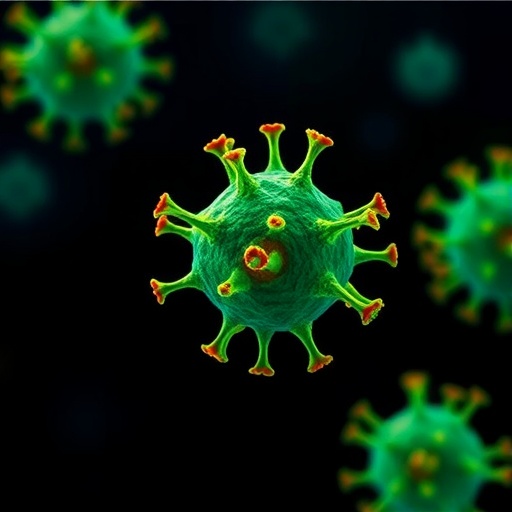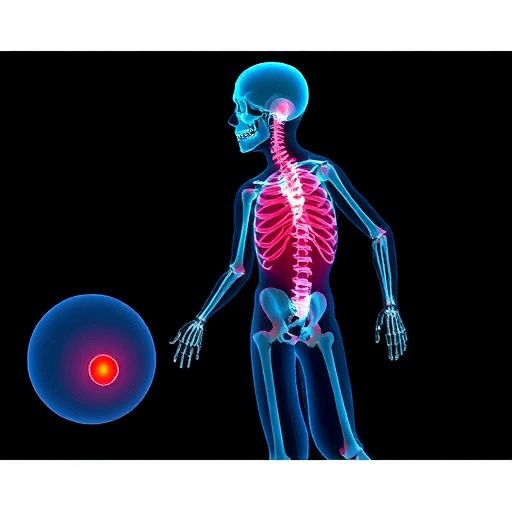
Interferon Regulatory Factor 3 (IRF3) has long been recognized as a pivotal transcription factor initiating the expression of type I interferons (IFN-I), which serve as crucial mediators in antiviral defense. Under resting conditions, IRF3 resides within the cytoplasm of most mammalian cells in an inactive state. Its activation is tightly controlled and typically triggered by phosphorylation events following viral infection, enabling a swift and potent antiviral response. This phosphorylation induces IRF3 dimerization and nuclear translocation, where it binds to interferon-stimulated response elements (ISREs) to transactivate IFN-I genes. The immediate consequence is the production of IFN-I, which orchestrates an antiviral milieu to constrain viral replication and spread.
Despite the well-established role of IRF3 in initiating IFN-I responses, recent research has expanded our understanding of IRF3’s functions beyond merely serving as a trigger for interferon gene transcription. Emerging data suggest that IRF3 participates in broader aspects of cellular antiviral defenses, including modulation of cell death pathways, regulation of inflammatory signaling cascades, and direct interference with viral replication mechanisms. These multifaceted roles complicate our conceptualization of IRF3, highlighting it as a versatile molecular sentinel with context-dependent effects during viral infection.
Activation of IRF3 involves a cascade initiated by pattern recognition receptors (PRRs), such as RIG-I-like receptors and Toll-like receptors, which detect viral nucleic acids and initiate downstream signaling. Kinases such as TBK1 and IKKε orchestrate phosphorylation at critical serine residues of IRF3, culminating in its conformational shift and acquisition of transcriptional activity. Additionally, IRF3’s activity is dynamically regulated by post-translational modifications beyond phosphorylation, including ubiquitination and acetylation, which influence its stability and interaction networks.
IRF7, a related IFN regulatory factor, amplifies the IFN-I response by being induced downstream of IRF3 and interferon signaling itself. This hierarchical interplay ensures a robust and sustained interferon signature capable of confronting diverse viral challenges. However, the magnitude and kinetics of this interplay vary depending on cell type and the specific virus involved, underscoring a complex regulatory network modulating host antiviral immunity.
Studies utilizing IRF3-deficient cell lines, as well as genetically engineered mouse models, have provided insightful yet sometimes contradictory observations. While loss of IRF3 consistently leads to impaired IFN-I induction and thus higher viral loads, the resultant pathophysiological outcomes differ widely. In some viral infections, IRF3 deficiency exacerbates disease severity, whereas in others, it may render protection by mitigating excessive inflammatory damage. This dichotomy reveals that IRF3 acts not only as an antiviral sentinel but also influences the balance between immune activation and immunopathology.
In vivo studies in murine models demonstrate that IRF3-mediated IFN-I induction is critical during the early phases of infection, shaping the adaptive immune response and viral clearance. However, the systemic effects of IRF3 activity extend beyond the canonical interferon axis. For instance, IRF3 has been implicated in the regulation of inflammasome components and the modulation of programmed cell death pathways such as apoptosis and necroptosis, which can either limit viral dissemination or contribute to tissue injury depending on the infection context.
Importantly, clinical studies in humans with mutations or polymorphisms affecting IRF3 expression or function underscore its relevance to susceptibility or resistance against particular viral diseases. Certain IRF3 deficiencies are linked to heightened vulnerability to herpesviruses, influenza, and other pathogens, illustrating that IRF3’s role is conserved and essential across species. However, variations in clinical phenotypes reflect the complex crosstalk between IRF3-dependent signaling and other host immune pathways.
Beyond its antiviral duties, IRF3 has been reported to intersect with metabolic and oncogenic signaling networks, signifying a broader biological importance. Viral infections, by modulating IRF3 function, can inadvertently affect these cellular processes, which may influence viral pathogenicity and host recovery. This broad functional repertoire suggests that therapeutic targeting of IRF3 must consider potential off-target effects and the balance between beneficial and detrimental outcomes.
The evolving picture of IRF3 biology challenges the traditional paradigm that positioned this factor solely as an IFN-I response initiator. Instead, it emerges as a multifunctional hub integrating diverse signaling inputs and dictating a spectrum of antiviral and immunoregulatory responses. Deciphering the exact mechanisms directing IRF3’s multifarious roles remains a critical goal for virology and immunology, with significant therapeutic implications.
Considering pharmacological manipulation, efforts are underway to develop molecules capable of modulating IRF3 activity selectively. Such interventions could enhance antiviral defenses in immunocompromised or highly susceptible populations while dampening hyperinflammatory conditions where IRF3-mediated responses contribute to pathology. These therapeutic strategies require a detailed understanding of IRF3 regulatory dynamics across different cellular and systemic contexts.
Recent technological advances, including high-resolution structural studies and single-cell transcriptomics, are propelling deeper insights into IRF3 activation states and downstream effectors. These approaches reveal heterogeneous activation patterns and gene expression footprints shaped by IRF3 in infected tissues, which may underlie varying disease outcomes. Integrating these data sets will refine our understanding of IRF3’s role within the complex host-pathogen interplay.
Moreover, the interplay between IRF3 and viral evasion mechanisms is an area of intense research interest. Many viruses have evolved strategies to inhibit IRF3 activation, degrade the protein, or sequester its activation machinery, thereby subverting host immunity. Mapping these viral countermeasures informs the design of antiviral therapies aiming to restore or potentiate IRF3 function.
In summary, IRF3’s role in viral infections transcends its classical function as the initial trigger of the IFN-I pathway. It operates at the crossroads of innate immune signaling, cell fate decisions, and inflammatory regulation, shaping both antiviral defense and disease pathology. Ongoing research continues to unravel the sophisticated regulatory network surrounding IRF3, promising novel insights that could translate into innovative treatments against viral diseases.
The intricate balance IRF3 maintains during infection highlights the broader principle that immune factors rarely act in isolation. Rather, they integrate diverse signals to modulate cellular and systemic responses finely tuned to the pathogen encountered and the tissue environment. Understanding how IRF3 fits into this mosaic of immune regulation remains a compelling challenge with profound biomedical significance.
This expanding view of IRF3 encourages reexamination of past assumptions and stimulates new hypotheses about host-pathogen interactions. As we harness this knowledge, the prospect of manipulating IRF3’s multifaceted activities holds potential for transformative advances in managing viral infections and the immune-mediated sequelae they precipitate.
Subject of Research:
Interferon Regulatory Factor 3 (IRF3) functions and roles in viral infections beyond initiating type I interferon responses.
Article Title:
IRF3 in viral infections: more than just triggering the interferon response.
Article References:
Bourdon, M., Manet, C. & Montagutelli, X. IRF3 in viral infections: more than just triggering the interferon response.
Genes Immun (2025). https://doi.org/10.1038/s41435-025-00354-2
Image Credits: AI Generated
DOI: https://doi.org/10.1038/s41435-025-00354-2
Tags: antiviral response mechanisms in mammalian cellscontext-dependent effects of IRF3emerging research on IRF3 roles.interaction with viral replication mechanismsIRF3 functions in antiviral defensemodulation of cell death pathwaysnuclear translocation of transcription factorsphosphorylation and dimerization of IRF3regulation of inflammatory responsesrole of pattern recognition receptors in immunitytranscription factors in immune regulationtype I interferon signaling pathways




